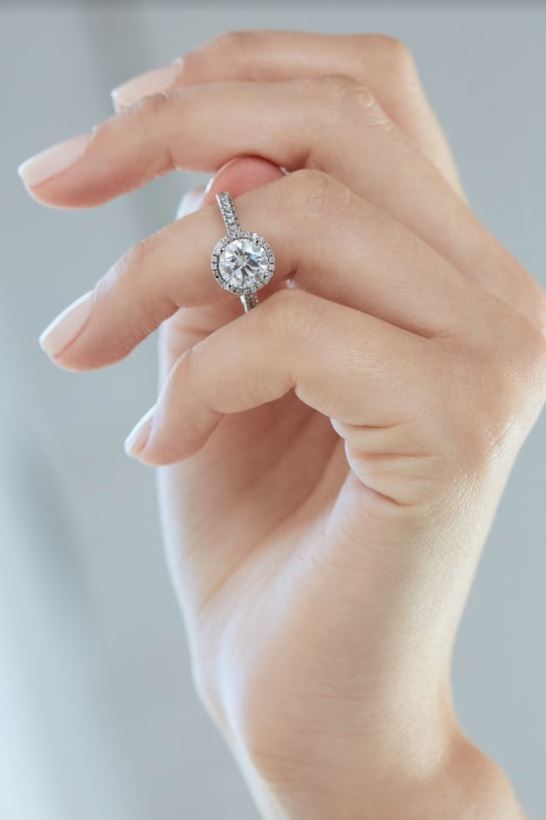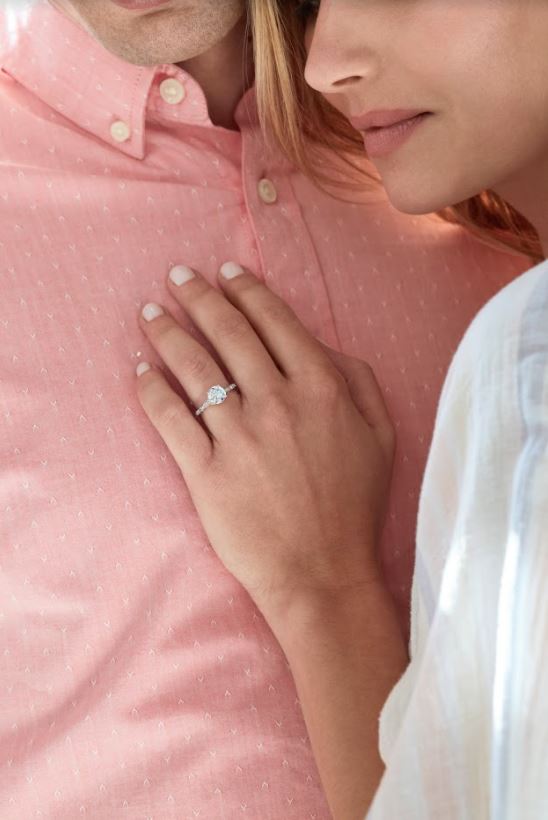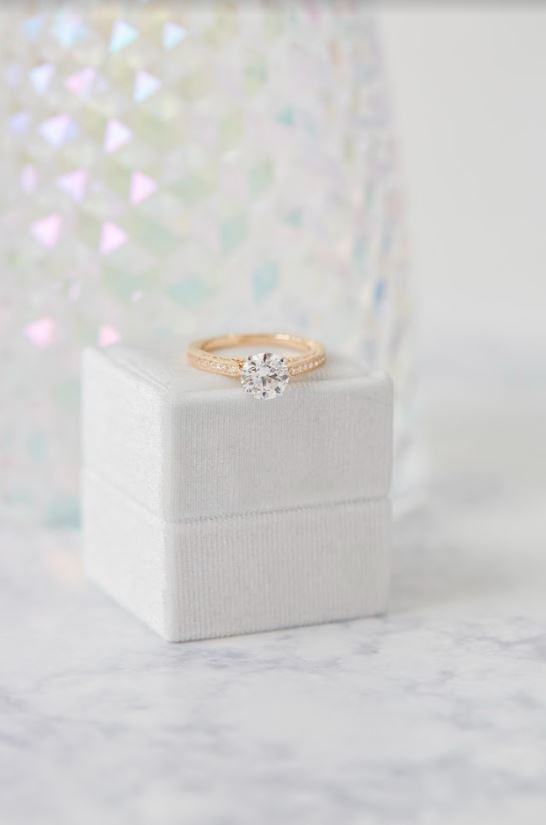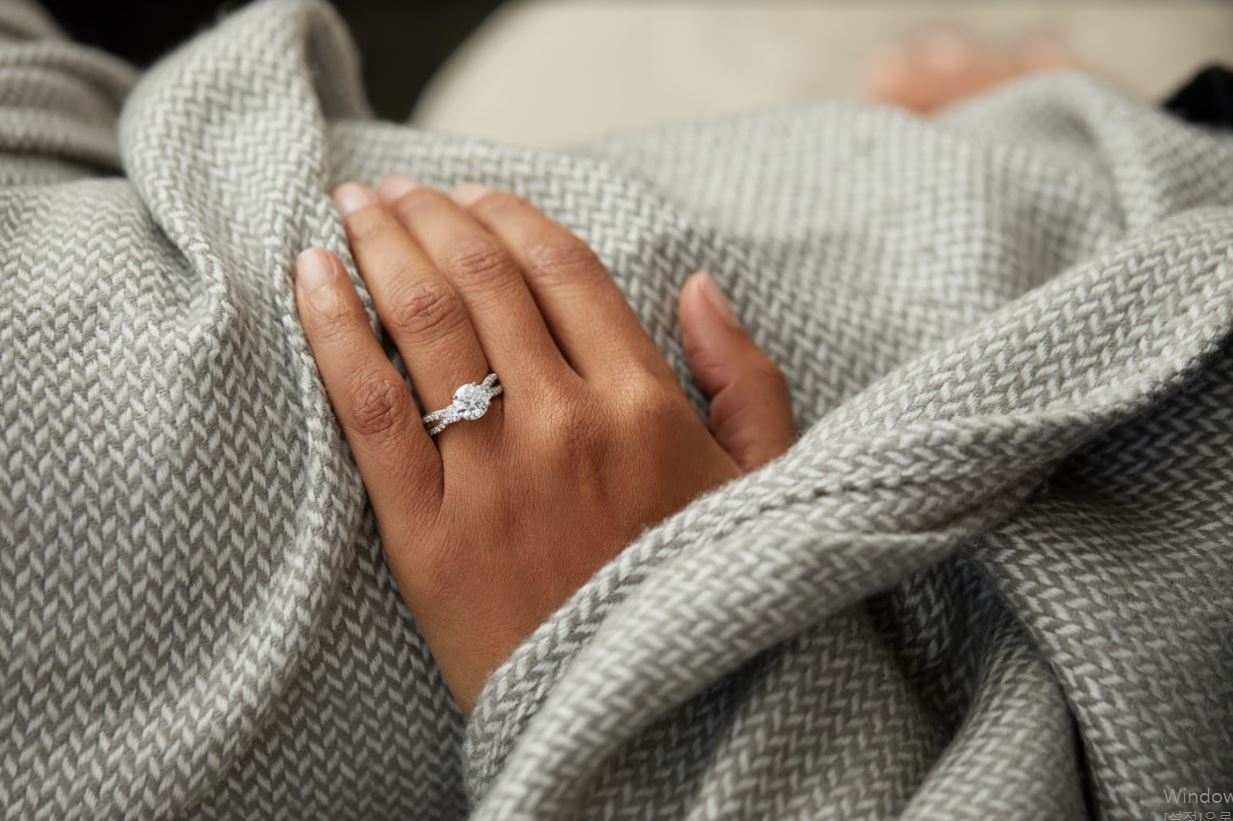Buying a diamond is an exciting experience. Not only do you walk away with an incredible treasure, but you get to dive into the wonderful world of diamonds. Unfortunately, this world can be overwhelming, as there are many options to choose from and a plethora of facts to learn.
If you want to ensure that you get the most out of your diamond purchase, you'll need to do your research beforehand. Luckily, this guide will walk you through everything you need to know about buying a diamond. Let's dive in!
Buying Online vs. In-Person
In-person diamond shopping has been the standard — many people always thought there wasn’t really any substitute for holding a diamond in your hand and experiencing its brilliance firsthand. However, in the past few years, it's got a challenger.
Buying your diamond online is becoming an increasingly popular option. It's a safe, pleasurable, and rewarding experience if you are prepared with the right strategies. Be sure to do your due diligence before making any online diamond purchase.
Ensure that the diamond has been graded, the vendor is legitimate, and that you have fail-safes in place to ensure you can make an easy return if the stone isn’t exactly what you were looking for. With the proper precautions, buying a diamond online can net you the gem of a lifetime.

The 4 C's
The 4 C's of diamonds are cut, clarity, carat, and color. These metrics are used to evaluate the characteristics of a diamond. Each metric of the 4 Cs will impact your diamond's appearance, especially if you choose a "fancy cut" or anything other than a round-brilliant diamond.
Though fancy cut diamonds aren't given a cut grade, understanding how fancy cut diamonds are affected by different quality standards will enable you to choose the best diamond for your needs.
Here's a breakdown of the 4 Cs:
-
Cut: The measure of quality in diamond cuts, focusing on how well the diamond interacts with light and its physical appearance.
-
Clarity: The presence of inclusions or blemishes in a diamond rated from FL (flawless) to I (included).
-
Color: The presence of color in a diamond. The diamond color scale is rated from D (colorless) to Z (light color).
-
Carat: This is the weight of a diamond, measured in carats or 200 milligrams.

Understanding Shape vs. Cut
A novice mistake, the terms shape and cut are often used interchangeably, but they are distinct attributes. Though it's an understandable mistake, as diamonds have to be cut into their shape.
That said, diamond shape refers to the outline of a diamond. For example, pear-shaped diamonds feature an outline similar to that of a teardrop.
Diamond cut refers to how a diamond has been cut to enhance the way it interacts with light and customizes its physical appearance. The standard diamond cut is brilliant, while the standard diamond shape is round. Hence, round-brilliant diamonds having the strictest grading requirements.
Mined vs. Lab-grown Diamonds
Traditionally mined diamonds have long held the throne as the most popular diamond option, but lab-grown diamonds are fast advancing as a contender.
Lab-grown diamonds are real diamonds that have been created in a lab setting, using advanced technology to form diamonds that are chemically, physically, and visually identical to mined diamonds.
Many shoppers are choosing lab-grown diamonds for their affordability. When you buy a lab-grown diamond, you get a real diamond for a fraction of the cost of a mined diamond. Not to mention, it's an ethical and eco-friendly option, as these diamonds are created in a lab setting, not mined using unsavory and energy inefficient practices.

Conclusion
Buying a diamond isn't for the faint of heart. It takes some research, patience, and a little luck. Of course, you've got all those things, so happy buying!
This article does not necessarily reflect the opinions of the editors or management of EconoTimes



 Bridgewater Associates Plans Major Employee Ownership Expansion in Milestone Year
Bridgewater Associates Plans Major Employee Ownership Expansion in Milestone Year  OpenAI Explores Massive Funding Round at $750 Billion Valuation
OpenAI Explores Massive Funding Round at $750 Billion Valuation  Volaris and Viva Agree to Merge, Creating Mexico’s Largest Low-Cost Airline Group
Volaris and Viva Agree to Merge, Creating Mexico’s Largest Low-Cost Airline Group  Apple Opens iPhone to Alternative App Stores in Japan Under New Competition Law
Apple Opens iPhone to Alternative App Stores in Japan Under New Competition Law  Dina Powell McCormick Resigns From Meta Board After Eight Months, May Take Advisory Role
Dina Powell McCormick Resigns From Meta Board After Eight Months, May Take Advisory Role  Maersk Vessel Successfully Transits Red Sea After Nearly Two Years Amid Ongoing Security Concerns
Maersk Vessel Successfully Transits Red Sea After Nearly Two Years Amid Ongoing Security Concerns  Oracle Stock Slides After Blue Owl Exit Report, Company Says Michigan Data Center Talks Remain on Track
Oracle Stock Slides After Blue Owl Exit Report, Company Says Michigan Data Center Talks Remain on Track  Nike Shares Slide as Margins Fall Again Amid China Slump and Costly Turnaround
Nike Shares Slide as Margins Fall Again Amid China Slump and Costly Turnaround  Instacart Stock Drops After FTC Probes AI-Based Price Discrimination Claims
Instacart Stock Drops After FTC Probes AI-Based Price Discrimination Claims  7-Eleven CEO Joe DePinto to Retire After Two Decades at the Helm
7-Eleven CEO Joe DePinto to Retire After Two Decades at the Helm  FDA Fast-Tracks Approval of Altria’s on! PLUS Nicotine Pouches Under New Pilot Program
FDA Fast-Tracks Approval of Altria’s on! PLUS Nicotine Pouches Under New Pilot Program  Trump Signals Push for Lower Health Insurance Prices as ACA Premium Concerns Grow
Trump Signals Push for Lower Health Insurance Prices as ACA Premium Concerns Grow  U.S. Lawmakers Urge Pentagon to Blacklist More Chinese Tech Firms Over Military Ties
U.S. Lawmakers Urge Pentagon to Blacklist More Chinese Tech Firms Over Military Ties  Republicans Raise National Security Concerns Over Intel’s Testing of China-Linked Chipmaking Tools
Republicans Raise National Security Concerns Over Intel’s Testing of China-Linked Chipmaking Tools  Citi Appoints Ryan Ellis as Head of Markets Sales for Australia and New Zealand
Citi Appoints Ryan Ellis as Head of Markets Sales for Australia and New Zealand  ANZ New CEO Forgoes Bonus After Shareholders Reject Executive Pay Report
ANZ New CEO Forgoes Bonus After Shareholders Reject Executive Pay Report  Sanofi’s Efdoralprin Alfa Gains EMA Orphan Status for Rare Lung Disease
Sanofi’s Efdoralprin Alfa Gains EMA Orphan Status for Rare Lung Disease 




























